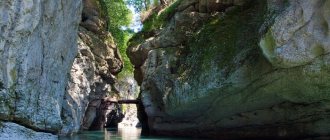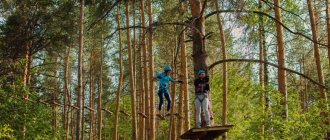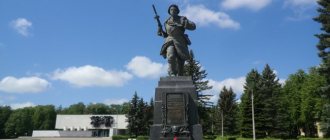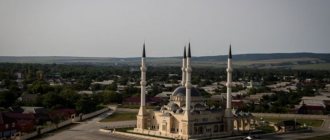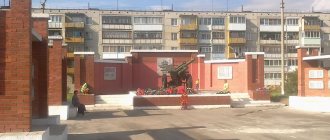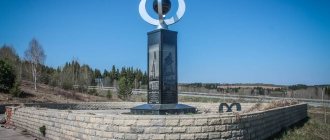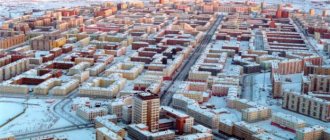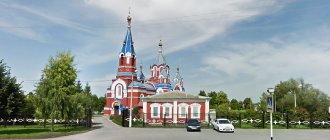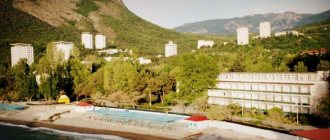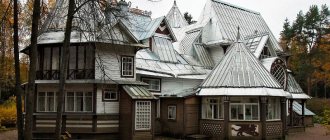Save it for yourselfPrint
A small republic in the Caucasus with stunningly beautiful nature. This is Adygea. 01 region in the Russian Federation, seriously - Adygea code 01.
People come to Adygea to hike the mountains, bungee jumping, rafting down rivers, or simply enjoy the snowy peaks or flowering meadows. The Republic of Adygea is surrounded on all sides by the territory of the Krasnodar Territory. Holidays in Adygea can be combined with sunbathing on the Black Sea shore. After all, you can get to the Black Sea from the republic in a few hours.
Geographical position
The Republic of Adygea is located in the central part of the North-West Caucasus, in the basins of the Kuban, Laba and Belaya rivers. The geographical location is very convenient, and it provides favorable conditions for the economic development of the territory. Railways and highways connect the Republic of Adygea with many regions of the Krasnodar Territory and the Russian Federation.
Date of formation
The Adyghe Autonomous Region was formed on July 27, 1922 by a resolution of the Presidium of the All-Russian Central Executive Committee by separating the Kuban-Black Sea region from the Krasnodar and Maikop departments.
On June 28, 1991, the Declaration of State Sovereignty of the Soviet Socialist Republic of Adygea was adopted. The Law of the Russian Federation of July 3, 1991 formalized the transformation of the Adygea Autonomous Region into the Soviet Socialist Republic within the RSFSR.
Administrative division
The capital of Adygea is the city of Maykop. The republic is divided into 7 administrative regions:
- Giaginsky,
- Koshekhablsky,
- Krasnogvardeisky,
- Maikopsky,
- Takhtamukaisky,
- Teuchezhsky,
- Shovgenovsky,
and 46 rural administrations, in which 224 settlements are located. There are 2 cities of republican significance in the republic: Maykop and Adygeisk, 5 urban-type settlements. Settlements are mainly auls, villages, and rural settlements.
Population
The population of the Republic of Adygea is 463,088 people, according to data for 2021. The average population density is 56.6 people per 1 sq. km, which is almost three times the Russian average. The population density is highest in the regions.
About half of the total population of Adygea is concentrated in two cities - Maykop and Adygeisk, and five urban-type settlements.
Adygea is a multinational republic; more than 100 nationalities live on its territory. The main population is Russians (52%) and Adygeis (24.2%). Other peoples inhabiting the republic include Armenians, Belarusians, Ukrainians, Germans, Greeks and others.
Nature of the Republic
Truly Adygea is a unique paradise of nature. The western part of the Greater Caucasus in terms of the diversity of flora and fauna and their preservation has no equal not only in the Caucasus region, but also among other mountainous regions of Europe and Western Asia. A large number of endangered rare, endemic and relict species of plants and animals are concentrated here.
The climate of the republic is very diverse, despite its small area.
- in the northern lowland part of Adygea the climate is temperate continental,
- in the foothills - warm, humid,
- and in the southern part there is a cold climate of the highlands.
The number of days with precipitation per year is 115 - 150. Warm days a year are 200 - 210, clear days - from 200 to 250. The average temperature in January is −2 °C, July is +28 °C. Precipitation is about 700 mm per year.
Science, education and culture
Main article: Adyghe literature
Main article: Adyghe studies
The oldest cultural monument of the Adyghe ethnic group is the Nart epic, which reflects the Adyghes’ ideas about the world at the early stage of the development of human society, their occupations, ethical standards and philosophical ideas, legends, features of life and morals.
There are two universities in the republic:
- Adyghe State University, former Adyghe Pedagogical Institute (ASU)
- Maikop State Technological University (MSTU)
Secondary specialized educational institutions operate:
- Adyghe Pedagogical College named after. Kh. Andrukhaeva,
- Adyghe Republican College of Arts named after. U. Kh. Thabisimova,
- Maikop Medical College (MMK).
- Maikop State Humanitarian and Technical College at the Adyghe State University (MGGTK ASU),
- Polytechnic College at MSTU,
- professional lyceum No. 6.
Subdivisions (branches, departments) of Russian universities are open and operating in the republic:
- Adyghe branch of the North Caucasus Academy of Public Administration in Maykop,
- Maikop branch of the Modern Humanitarian Academy,
- Adyghe branch of the Moscow Open Social Academy (MOSA),
- Adyghe branch of the South Russian State Technical University (Novocherkassk Polytechnic Institute),
- Adyghe branch of Kuban State Medical University,
- Adyghe branch of the Russian State Social University.
Valid
- Adyghe Republican Institute for Advanced Studies,
- Adyghe Research Institute of Agriculture,
- Adyghe Republican Institute of Humanitarian Studies named after T. M. Kerashev.
There are 8 state and 23 public museums in Adygea.
The National Museum of the Republic of Adygea has unique archaeological, ethnographic, and natural collections. A special department of the Adyghe diaspora was opened, the clear result of which was a significant replenishment of the museum’s funds with exhibits from the period of the Caucasian War (1817-1864) and the life of the Adygs abroad.
There is a branch of the State Museum of Oriental Art in Maykop.
In the Republic of Adygea there are 370 units of state institutions of culture and art, including: 153 institutions make up a library network, 130 club establishments, 35 cinemas and film installations, 23 educational institutions, 8 museums, 6 theater and concert organizations, 1 art gallery, inspection protection of historical and cultural monuments, etc.
Dolmens
Scientists are still arguing about the purpose of these ancient buildings made of flat stone slabs. The Circassians themselves call dolmens “sirp un” - “houses of dwarfs”. According to local legends, these dwarfs were something like Western European gnomes: they had the ability to find rare metals and precious stones, which they hid in their stone dwellings. The version about dwarfs does not fit into scientific versions in any way, because scientists consider dolmens to be either religious buildings or burial places.
Adyghe dolmens are interesting because they are often located in whole groups. Thus, in the Bogatyrskaya Polyana in the village of Novosvobodnaya, an entire alley was made of 50 stone buildings.
The most visited dolmen in the republic is Khadzhokhsky , it is located in the village of Kamennomostsky (Khadzhokh) .
According to some sources, it was built at the beginning of the 3rd millennium BC. e. In the same village, enthusiasts organized the Rock Garden museum . There is a valuable geological collection of various stones and minerals here. Tourists will also be shown a great rarity - ammonites, fossilized ancient mollusks.
Dakhovsky Egg Bridge
It is located in the village of Dakhovskaya and is called so because during construction egg white was added to the solution.
The bridge was built across the Dakh River by the Cossacks in 1906, and is still perfectly preserved. Meanwhile, they built it forcibly, as a punishment. The 2nd Urup Cossack Regiment refused to take on police functions and did not go to Georgian Tiflis to suppress the workers' uprising. Instead, the Cossacks dispersed to their villages. Such pacifism cost the villagers dearly: some of them were sent to hard labor, and some were sent to improve the transport infrastructure of the Russian Empire. The bridge they built could withstand huge timber trucks in peacetime, and even tanks during the war. Now, in order to preserve the historical building, a modern bridge has been built nearby.
St. Michael's Monastery in the village of Pobeda
It is considered the highest mountain monastery in Russia. The monastery was founded in 1877. Every pilgrim who came here brought stones with them for construction. And not only cells and temples were built here: on the territory of the monastery there was even an alabaster factory, a meteorological station, a hospital and a school for children from nearby villages.
During the persecution of religion, a children's labor colony, a state farm, and a camp site were located here. This place was finally returned to the church only in 2003. But there are no fewer tourists here: this is one of the most visited places in Adygea, especially since there is a whole network of popular walking and horse riding routes nearby.
Caucasian State Natural Biosphere Reserve
Included as a UNESCO World Heritage Site. Its area is 320 hectares. The reserve is located on the territory of Adygea, Karachay-Cherkessia, Krasnodar Territory and is adjacent to the borders of Abkhazia. In the Adyghe part, visitors can access the Museum of Nature in Guzeripl. It introduces tourists to the history of the creation of the reserve and its flora and fauna.
Near the museum you can see a dolmen, which is considered the largest and most preserved in Adygea.
The history of the reserve is closely connected with the Russian royal family. It was here that the hunting grounds of Grand Duke Sergei Mikhailovich were located. He rented these lands from the Kuban Cossack army. This helped save the local king of the animal world - the Caucasian mountain bison.
Economy
The main economic sectors of the region are industry, agriculture, tourism and trade.
Industry
Industry is one of the basic sectors of the region's economy.
Industrial enterprises in the region are represented by 7 industries. In the structure of industrial production, the largest share belongs to manufacturing industries - 80.4% in the total volume of shipped industrial products ( of which: food production - 26.4%; production of other non-metallic products - 37.2%; production of wood products - 16 .7%
), followed by mining - 16.0%, production and distribution of electricity, gas and water - 2.7% and less than 1% in the structure of shipped industrial products is occupied by forestry.
Agriculture
In the region, agricultural activities are carried out by 18 agricultural enterprises, 118 peasant farms ( of which: 65 in the field of crop production and 53 in the field of livestock production
), as well as 112 individual entrepreneurs.
The world's northernmost tea-growing farm is located in the Maykop region. Tea processing is carried out at the Adyghe branch of the All-Russian Research Institute of Floriculture and Subtropical Crops in the village of Tsvetochny.
Tourism
The Maykop region is one of the main year-round resorts in the North-West Caucasus and is the main tourist center of the republic, with great natural and tourist potential.
The following areas have received the greatest development in the region: sports tourism, ecotourism, hiking tourism, water tourism, mountain tourism, mountaineering, auto tourism, ethnotourism, as well as pilgrimage to places of worship. One of the most significant investment projects in the tourism sector of the region and the republic as a whole is the “Lago-Naki Gates” Tourist and Recreational Cluster, which provides for the construction of interconnected tourist and excursion facilities.
Khadzhokh Gorge
Located in the village of Kamennomostsky.
This is a narrow and winding canyon of the Belaya, the most powerful river in the republic. Fans of mountain rafting come here. The best time for rafting on the Belaya is during a flood, when the water level rises and the current reaches breakneck speed. It is better for beginners to choose another place for their training: in the gorge there are many rapids and sharp turns that pose a danger even for an experienced rafter.
The river bed is surrounded by steep cliffs, which attract fans of mountaineering. However, now the Khadzhokh Gorge is also equipped for walking tours. Fences were installed here, and observation decks were organized in the most picturesque places.
Rufabgo Falls
Many other tourist routes also begin in the Kamennomostsky area. In particular, to the Rufabgo waterfalls - this is the name of the tributary of the Belaya River. Tourists are attracted to the lower section of Rufabgo, where it flows through a deep mountain gorge. It is considered a real geological monument because it consists of rocks that differ in time and density. Crossing them, the river either narrows or widens, forming a dozen picturesque waterfalls on its way.
The path to the four waterfalls is fully equipped for tourists; paths have been laid here, platforms and fences have been installed. To get to the rest, you need to independently climb the path laid in the gorge.
Cave Through
The legends of this place talk about the battle of the young Circassian Khadzhokh with the giant Rufabgo, who got into the habit of dragging the most beautiful girls from the surrounding settlements. The giant, a connoisseur of female beauty, lived, according to legend, in another local attraction - the Skvoznoy cave . It is located next to the Shum waterfall. Such a dwelling is really fit only for a giant: the cave is very large, its depth is about 20 meters. It is called through because of the “window” in the back.
Geographical position
The republic is located in the southwest of the Russian Federation, on the left bank of the Kuban, occupies the central part of the Kuban inclined (Zakubanskaya) plain and the northern slopes of the Northwestern Caucasus.
The main territory of the republic is located in the basin of two main tributaries of the Kuban: the Laba and Belaya rivers and is located between parallels 44° and 45° N. The 45th parallel crosses the Krasnodar Reservoir and the northern part of the Kuban Plain, the 44th parallel passes through mountainous areas near the lake. Psenodakh and village. Guzeripl, the 40th meridian almost in the middle crosses the republic from north to south, passing through the central part of the Lagonaki Highlands, just west of Maykop and st. Giaginskaya.
Adygea borders the Krasnoarmeysky, Dinsky, Ust-Labinsky, Kurganinsky districts of the Krasnodar Territory and the city of Krasnodar in the north, with the Adlersky, Lazarevsky, Khostinsky districts of the city of Sochi in the south, with the Apsheronsky, Belorechensky, Seversky districts and the city of Goryachiy Klyuch in the west and Mostovsky, Labinsky and Kurganinsky districts in the east.
The area of Adygea is 7790 sq. km. The length of the borders is 900 km. The length of the territory of the republic from north to south is 208 km, from west to east 165 km.
Natural resources
Adygea is rich in forest resources, occupying more than a third of its territory in the southern part. Among the mineral resources, there are small reserves of natural gas, large reserves of building materials (gravel, sand, clay, limestone), and small deposits of gold and ore materials are located in the mountainous part of the republic.
Lagonaki Plateau
The Lagonaki Plateau stretches between the Stone Sea ridge and Mount Messo for 650 square kilometers. The altitude above sea level is almost 2000 meters. All kinds of extreme sports enthusiasts come here: travelers, rock climbers, and in winter - skiers. On the plateau there is a slope for skiers and snowboarders, and there is a special hill only for lugers. Part of the plateau also covers the Krasnodar Territory.
Lagonaki is part of the Caucasus Nature Reserve. The places here are wild, untouched, practically not equipped for tourists, and therefore difficult to pass. This attracts those who are ready to sacrifice comfort for the sake of the pristine beauty of nature and many ancient legends. However, if you don’t need large doses of adrenaline, there is no need to climb into the most remote places of Lagonaki. There are many excursions and routes organized to certain parts of the plateau; check with local travel companies for details. There are places more suitable for tourists in that part of Lagonaki that extends into the territory of the Krasnodar Territory.
Story
Main article: History of Adygea
Until 1991, it was not a separate republic; the territory was part of the Krasnodar Territory. In December 1991 - January 1992, elections of deputies to the Supreme Council of the Republic of Adygea took place. The first parliament in the history of Adygea was formed. In 1993, it was transformed into the Legislative Assembly (Hase), and in 1995 into the State Council - Hase.
In January 1992, the first president of the republic, Aslan Dzharimov, was elected, and in March 1992, the first chairman of the Supreme Council of the Republic of Adygea, Adam Tleuzh. From 2007 to 2007, Adygea was headed by Khazret Sovmen, from 2007 to 2021 - by Aslan Tkhakushinov. Since 2017, the Head of the Republic of Adygea is Murat Kumpilov.
On December 25, 1993, the Constitution of the Russian Federation, which came into force, confirmed the republican status of Adygea.
The Constitution of the Republic of Adygea was approved by the Legislative Assembly (Khase) on March 10, 1995.
Thermal springs
Adygea is also famous for its thermal springs . Near the village of Pobeda there is the Maykop balneotherapy hospital . It was built near an iodine-bromide spring.
Other popular springs are located near the villages of Tula and Tsvetochny . They are especially spectacular in winter: the water temperature is above 40 degrees, so the springs would not freeze even in the most severe frosts, not to mention the mild Adyghe winter.
Local residents say this about the quality of this water:
- taste - like spring water,
- cleanliness - like thawed water,
- bactericidal properties - like silver.
Chemists consider this composition to be truly unique: it is sodium chloride bicarbonate with a high content of silicic acid. This set of active substances can help with a number of diseases. However, you should not dive headlong into these sources of health and joy: you should treat therapeutic bathing with caution, first study the contraindications.
Administrative division
Main article: Administrative-territorial division of Adygea
Modern administrative-territorial division of Adygea
According to the Law of the Republic of Adygea “On the administrative-territorial structure of the Republic of Adygea”, the republic includes administrative-territorial units: 7 districts and 2 republican city districts (2 cities of republican significance with subordinate settlements):
- Maykop Republican Urban District,
- Adyghe Republican Urban District,
- Giaginsky district,
- Koshekhablsky district,
- Krasnogvardeisky district,
- Maykop district,
- Takhtamukay district,
- Teuchezhsky district,
- Shovgenovsky district.
They, in turn, also include settlements related to the administrative-territorial units of Adygea:
- urban settlements
- rural settlements
Within the framework of the municipal structure of the republic, 60 municipalities have been created within the boundaries of the administrative-territorial units of Adygea, among which the following stand out:
- 2 urban districts,
- 7 municipal districts, including: 48 rural settlements,
- 3 urban settlements.
| № | Coat of arms | Name | Administrative center | Area, km² | Population, people |
| Cities of republican significance (republican urban districts) | |||||
| 1 | Maykop | Maykop | 57 | 165 279 | |
| 2 | Adygeisk | Adygeisk | 31,5 | 15 207 | |
| Districts (municipal areas) | |||||
| 3 | Giaginsky district | Giaginskaya village | 790 | 31 394 | |
| 4 | Koshekhablsky district | aul Koshekhabl | 606 | 29 726 | |
| 5 | Krasnogvardeisky district | Krasnogvardeyskoe village | 726 | 31 765 | |
| 6 | Maykop district | Tula village | 3667 | 60 107 | |
| 7 | Takhtamukay district | village Takhtamukai | 440 | 82 909 | |
| 8 | Teuchezhsky district | aul Ponezhukay | 710 | 20 802 | |
| 9 | Shovgenovsky district | village Khakurinokhabl | 521 | 16 187 |
How to get there
By train. You can get to the capital of Adygea, Maykop, by train only with a transfer. The journey will take approximately 34 hours from Moscow by train No. 115A, which goes to Tuapse. Then you need to transfer to suburban train No. 812E to Maykop. Check ticket prices on the relevant services.
It takes almost two days to travel from St. Petersburg. The transfer also needs to be made in Tuapse, the train is the same - No. 115A.
By plane. The nearest airport is in Krasnodar. From there you can get to Maykop by intercity bus. It is convenient to view the schedule in Yandex. You will spend another 3 hours on the road.
By car. The distance from Moscow to Maykop is 1400 km. The road lies along the M-4 Don through Voronezh and Rostov and takes from 16 hours or more, depending on the number of stops and the endurance of the driver.
Administrative division
Main article: Administrative-territorial division of Adygea
Modern administrative-territorial division of Adygea
According to the Law of the Republic of Adygea “On the administrative-territorial structure of the Republic of Adygea”, the republic includes administrative-territorial units: 7 districts and 2 republican city districts (2 cities of republican significance with subordinate settlements):
- 1. Maykop Republican Urban District,
- 2. Adyghe Republican Urban District,
- 3. Giaginsky district,
- 4. Koshekhablsky district,
- 5. Krasnogvardeisky district,
- 6. Maykop district,
- 7. Takhtamukay district,
- 8. Teuchezhsky district,
- 9. Shovgenovsky district.
They, in turn, also include settlements related to the administrative-territorial units of Adygea:
- urban settlements:
- rural settlements:
Within the framework of the municipal structure of the republic, 60 municipalities have been created within the boundaries of the administrative-territorial units of Adygea, among which the following stand out:
- 2 urban districts,
- 7 municipal districts, including 48 rural settlements,
- 3 urban settlements.
| № | Coat of arms | Name | Administrative center | Area, km² | Population, people |
| Cities of republican significance (republican urban districts) | |||||
| 1 | Maykop | Maykop | 57 | 164 575 | |
| 2 | Adygeisk | Adygeisk | 31,5 | 15 133 | |
| Districts (municipal areas) | |||||
| 3 | Giaginsky district | Giaginskaya village | 790 | 31 971 | |
| 4 | Koshekhablsky district | aul Koshekhabl | 606 | 29 569 | |
| 5 | Krasnogvardeisky district | Krasnogvardeyskoe village | 726 | 32 125 | |
| 6 | Maykop district | Tula village | 3667 | 61 104 | |
| 7 | Takhtamukay district | village Takhtamukai | 440 | 92 035 | |
| 8 | Teuchezhsky district | aul Ponezhukay | 710 | 20 396 | |
| 9 | Shovgenovsky district | village Khakurinokhabl | 521 | 16 180 |
What to bring from Adygea
Of course, Adyghe cheese! You can buy different types at the market: salted, smoked, young or feta cheese. Smoked cheese lasts longer and is better preserved on the road.
Delicious Adyghe cheese in shepherds' booths in the reserve. They are located on the way from the Fisht shelter to the Babuk-Aul shelter, after the Belorechensky pass. Markets also sell “cheese popcorn” - these are hollow balls of dry, smoked cheese, but it’s not for everyone.
Other popular souvenirs are local chacha and sheep wool products. There are luxurious knitted socks with patterns on the market in Kamennomostsky.
Save it for yourselfPrint
Author of the publication
offline for 3 days
